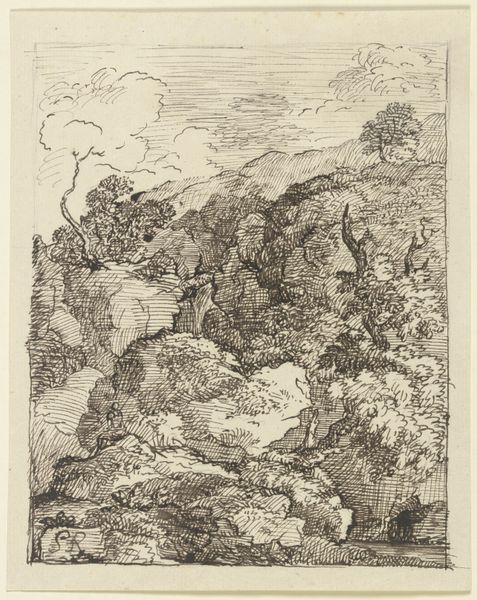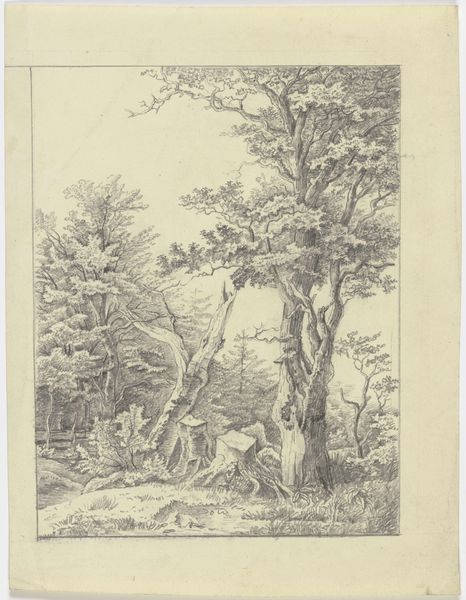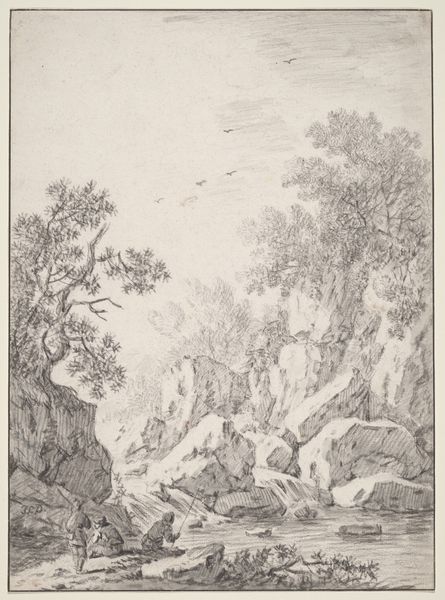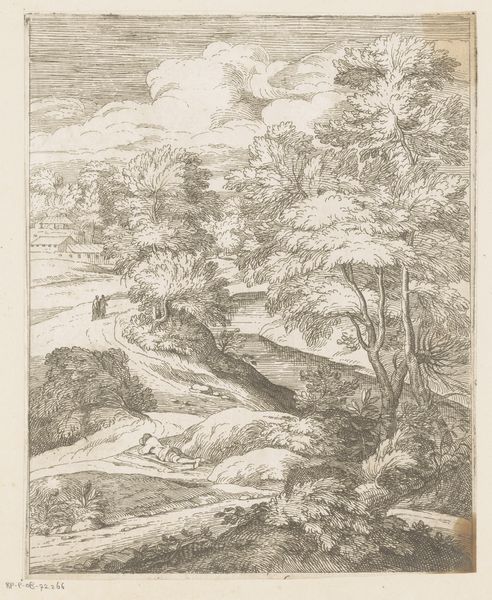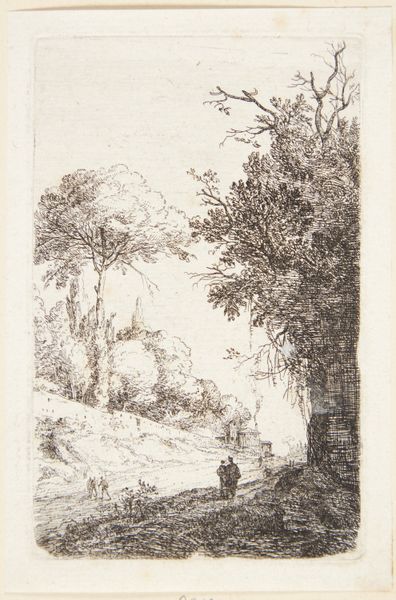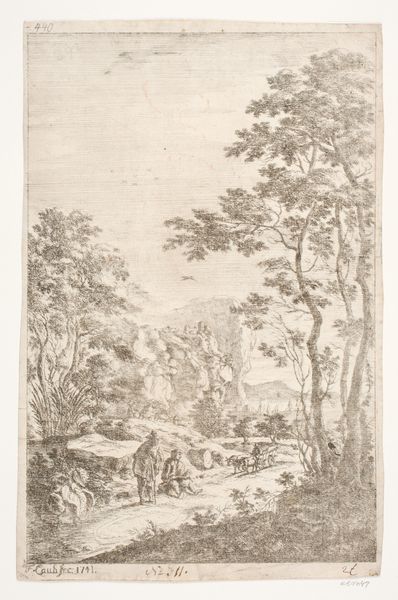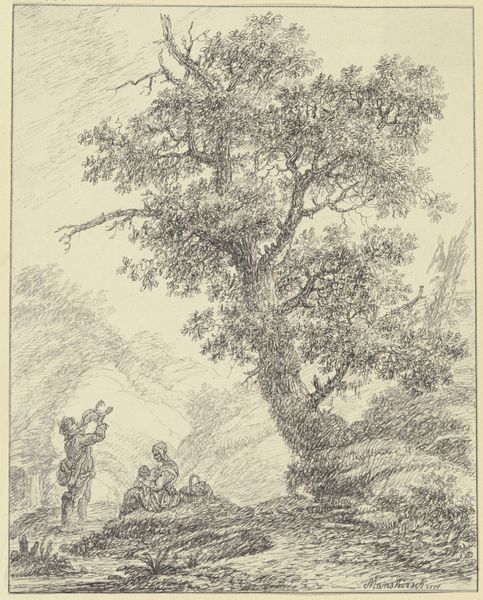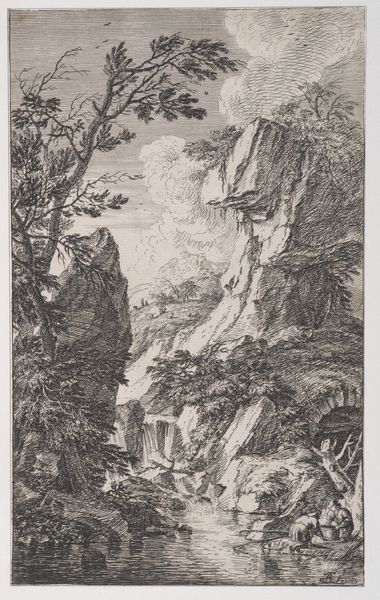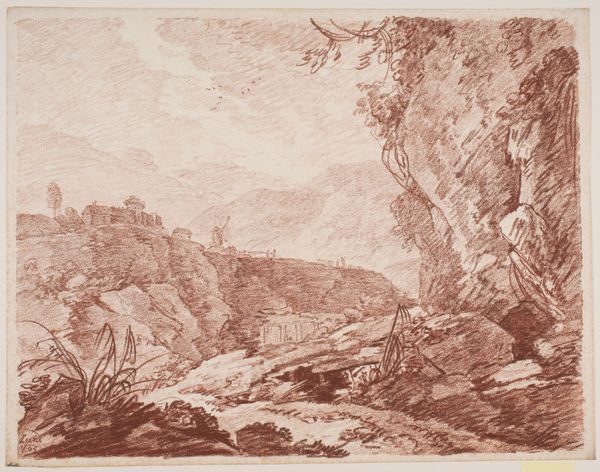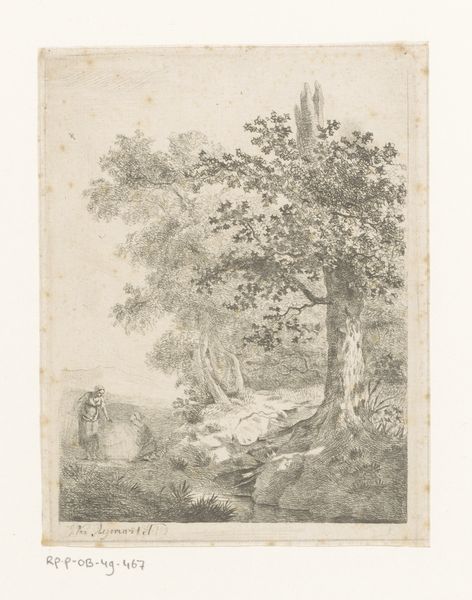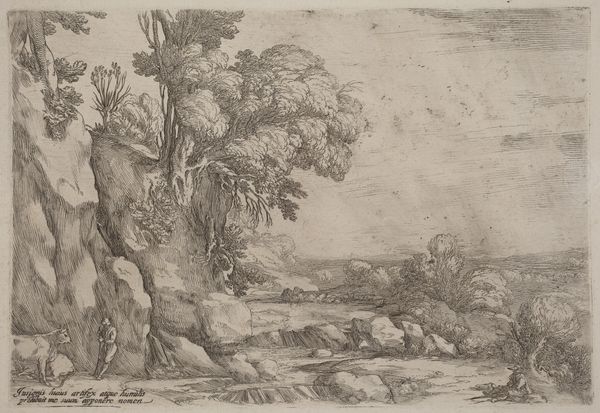
drawing, print, etching
#
tree
#
drawing
#
natural shape and form
# print
#
etching
#
landscape
#
figuration
#
line
#
natural palette
#
botanical art
#
rococo
Dimensions: Image: 7 1/16 × 5 1/2 in. (17.9 × 13.9 cm) Plate: 7 13/16 × 5 3/4 in. (19.8 × 14.6 cm) Sheet: 8 1/16 × 6 1/16 in. (20.5 × 15.4 cm)
Copyright: Public Domain
Curator: Let's discuss "Landscape with a Fallen Tree," an etching by Hubert Robert, dating back to 1764. What are your initial impressions? Editor: I find it incredibly somber. The fallen tree dominates the scene, lending an atmosphere of ruin or perhaps reflection on mortality, especially given the figures' small presence within this natural drama. Curator: The strength of this piece lies in Robert's line work. Note how he employs varied hatching to define the volumes of the rocks and foliage, creating depth and texture. Consider how the fallen tree itself acts as a diagonal bridge, both bisecting and connecting the composition. Editor: Precisely. That fallen tree can be seen as a potent symbol, not just of mortality but of disruption—a break in the established order of the landscape. It’s a visual rupture. This piece arrives during the Enlightenment; how can we ignore the implicit commentary on the era's social upheavals? And what about Robert's connections to the French court—how might this image function as critique or justification? Curator: I would propose that the interplay between order and disorder, is precisely what makes it such a compelling work. He masterfully controls light and shadow, guiding the viewer’s eye through this constructed wilderness. His mark-making is so specific; his choices about line weight are impeccable. Editor: Agreed, but to see only the formal brilliance is to ignore the political elephant in the room, especially in the era of revolution. Look at those figures, minute and burdened, struggling through a fallen world. The etching speaks, consciously or not, to the social and environmental anxieties simmering beneath the surface of 18th-century Europe. This is more than just picturesque; it's charged. Curator: Ultimately, “Landscape with a Fallen Tree” showcases how seemingly simple elements—lines, forms, and composition—can converge to create a captivating artistic vision. Editor: It offers not just a formal exercise in line and shade, but rather encourages dialogue about change, decline, and our place within a fragile and evolving world.
Comments
No comments
Be the first to comment and join the conversation on the ultimate creative platform.
